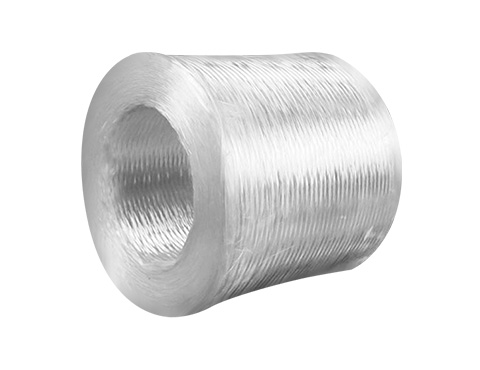
Introduce
Fiberglass is a versatile material used in various industries and has undergone significant advancements to meet the demanding requirements of modern applications. These innovations include ECR fiberglass, a high-performance variant acclaimed for its superior performance and durability.
You may be wondering, what is ECR fiberglass? What’s so special about it? Maybe you are thinking, what is the difference between fiberglass roving and traditional fiberglass? What are its application areas? Next, let’s delve into these issues, uncover the mystery of ECR glass fiber, and discover its true value and potential!
What is fiberglass ecr roving?
Fiberglass ecr roving is a specialized type of fiberglass renowned for its superior electrical and mechanical properties. It is engineered to withstand harsh environments, offering heightened resistance to corrosion, fatigue, and electrical conductivity. ECR fiberglass is used in a wide range of industries where durability, reliability and performance are critical, including the aerospace, automotive, wind power, construction and marine industries.
What is the composition of ECR glass fiber?
The composition of ECR glass fiber is meticulously crafted to imbue it with exceptional strength and resilience. Unlike conventional E-glass fiberglass, ECR fiberglass incorporates a modified glass formulation that enhances its resistance to environmental factors and chemical degradation. Typically, ECR glass fiber consists of silica (SiO2) as the primary component, along with oxides of aluminum, calcium, magnesium, and other trace elements. The addition of zirconia and other proprietary additives further enhances its properties, making it an ideal choice for demanding applications.
What is the density of fiberglass ecr roving?
The density of ecr fiberglass roving typically ranges between 2.50 to 2.70 grams per cubic centimeter (g/cm³), depending on the specific formulation and manufacturing process. This moderate density contributes to its lightweight nature while maintaining excellent mechanical strength, making it suitable for applications where weight reduction is crucial without compromising performance.
What are the properties of ECR glass fiber?
ECR glass fiber exhibits a plethora of desirable properties that distinguish it from other fiberglass variants:
ECR Roving boasts exceptional tensile strength, making it capable of withstanding heavy loads and mechanical stress without deformation or failure.
Its low electrical conductivity and dielectric properties render fiberglass ecr roving ideal for applications requiring electrical insulation, such as circuit boards, transformers, and electrical enclosures.
ECR fiberglass roving demonstrates superior resistance to corrosion, making it suitable for use in aggressive environments exposed to moisture, chemicals, and corrosive substances.
With a high melting point and low coefficient of thermal expansion, ECR 2400tex Fiberglass Roving maintains its structural integrity at elevated temperatures, ensuring long-term performance in high-temperature applications.
Fiberglass ecr roving exhibits remarkable resistance to a wide range of chemicals, acids, and alkalis, making it suitable for applications where exposure to corrosive substances is a concern.
Its inherent fatigue resistance ensures long-term durability and reliability, even under cyclic loading conditions, making it suitable for structural components subjected to repetitive stress.
ECR fiberglass maintains dimensional stability over a wide range of temperatures and environmental conditions, minimizing dimensional changes and ensuring precise fit and alignment in critical applications.
What is the difference between
ECR fiberglass and E-glass fiberglass?
While both ECR fiberglass and E-glass fiberglass share similarities in composition and manufacturing process, several key differences set them apart:
Improved Electrical Resistance
Unlike ecr fiberglass roving 2400tex, which exhibits moderate electrical conductivity, ECR fiberglass offers enhanced electrical resistance, making it better suited for electrical insulation applications.
Superior Corrosion Resistance
ECR fiberglass surpasses E-glass fiberglass in terms of corrosion resistance, making it preferable for use in corrosive environments such as marine applications and chemical processing industries.
Expert Customer Service
ECR fiberglass typically exhibits higher tensile strength and modulus of elasticity compared to E-glass fiberglass, resulting in superior mechanical performance and durability.
Cost and Availability
Due to its specialized formulation and enhanced properties, glass fiber ecr roving may be slightly more expensive and less readily available compared to E-glass fiberglass, which is more commonly used in general-purpose applications.
What is the difference between
ECR fiberglass and C-glass fiberglass?
C-glass fiberglass, also known as chemical-resistant glass fiber, shares some similarities with ECR fiberglass but differs primarily in its chemical composition and intended applications:
Chemical Composition
While both ECR fiberglass and C-glass fiberglass contain silica as the primary component, C-glass fiberglass incorporates a higher percentage of calcium oxide (CaO) and aluminum oxide (Al2O3), resulting in improved chemical resistance but slightly lower mechanical properties compared to ECR fiberglass.
Chemical Resistance
C-glass fiberglass is specifically designed for applications requiring superior chemical resistance, making it suitable for use in corrosive environments where exposure to acids, alkalis, and other aggressive chemicals is a concern.
Mechanical Properties
ECR glass fiber roving generally exhibits higher tensile strength and modulus of elasticity compared to C-glass fiberglass, making it preferable for applications where mechanical performance and durability are critical.
Cost and Availability
C-glass fiberglass may be more cost-effective and readily available compared to ECR fiberglass for applications where chemical resistance is the primary requirement.
D-In what areas can fiberglass ecr roving be used?
ECR glass fiber finds widespread applications across various industries, owing to its exceptional properties and performance characteristics:
Aerospace
Fiberglass ecr roving is utilized in the manufacture of aircraft components, such as structural panels, fairings, and radomes, where lightweight, high-strength materials are essential for achieving optimal performance and fuel efficiency.
Wind Energy
ECR fiberglass roving is utilized in the manufacture of wind turbine blades, where its high strength, fatigue resistance, and corrosion resistance enable efficient energy generation and long-term durability in demanding offshore environments.
Electrical and Electronics
ECR glass fiber finds applications in electrical and electronic components, such as circuit boards, insulators, and electrical enclosures, where excellent electrical insulation, thermal stability, and resistance to electrical arcing are essential.
Automotive
In the automotive industry, ecr fiberglass roving is employed in the production of lightweight composite parts, including body panels, bumpers, and interior components, to improve fuel economy, reduce emissions, and enhance crashworthiness.
Marine
Fiberglass ecr roving is extensively used in marine applications, such as boat hulls, decks, and marine structures, where resistance to moisture, saltwater corrosion, and harsh environmental conditions is critical for long-term durability and performance.
Construction
ECR fiberglass is utilized in construction materials, including reinforcement bars, structural composites, and architectural elements, to enhance structural strength, durability, and resistance to seismic forces and environmental degradation.
Chemical Processing
Fiberglass ecr roving is employed in chemical processing equipment, such as pipes, tanks, and vessels, where resistance to corrosion from acids, alkalis, and harsh chemicals is critical for maintaining process integrity and safety.
In Conclusion
In this comprehensive exploration, Aiswix delves into the complexities of ECR glass fiber, examining its composition, properties, applications and distinguishing characteristics compared to other glass fiber types. Through the above in-depth analysis of fiberglass ecr roving, I believe readers will have a deeper understanding of the composition and characteristics of this material.
For future applications, fiberglass ecr roving represents a significant advancement in fiberglass technology, providing unparalleled performance, durability and versatility in a wide range of applications. As technology continues to evolve, ECR glass fibers will play a vital role in shaping the future of advanced composites and engineered materials.



